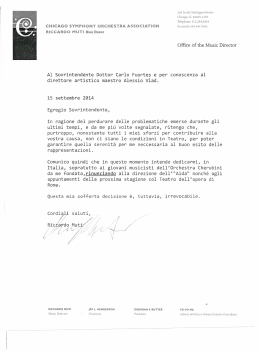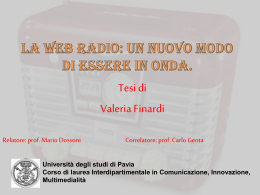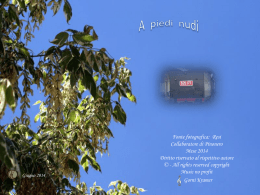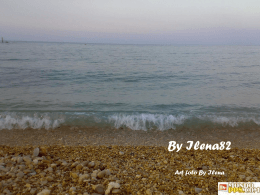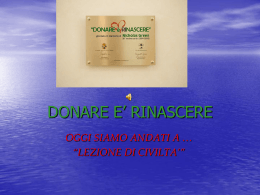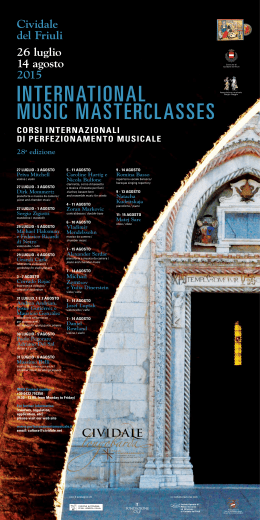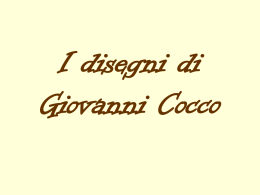Concerto genere: vocale contemporaneo elettronico multimediale Electric Voice è un evento mondiale, con un concerto itinerante su scala globale in America e Europa che si chiude a Roma, ospite di Musica Experimento. Costruito sulla voce del celebre basso franco-americano Nicholas Isherwood a partire da Havona, ultima opera del compositore recentemente scomparso Karlheinz Stockhausen a lui dedicata, l’evento prende forma con le nuove opere di sei compositori viventi: Jean Claude Risset, Daniel Teruggi, Mark Appelbaum, Jeffrey Stolet, Robert HP Platz ed Enrico Cocco, che a Roma presenta la versione del suo Mind Dream in prima esecuzione assoluta con le immagini dell’architetto Rosario Marrocco. Electric Voice verte sul rapporto molteplice tra la voce e le tecnologie elettroniche. La Voce nelle sue tante articolazioni contemporanee: voce cantata, parlata, filtrata, onomatopeica, scenica, drammaturgica, narrante, voce come doppio contrapposta all’elettronica, la voce e l’immagine video, in un gioco mimetico di somiglianze e differenze all’interno degli spazi del suono. Musica Experimento opera da oltre quattrordici anni nella produzione, la ricerca e la diffusione di opere innovative nell’ambito del teatro musicale, nella performance, nel rapporto tra la musica e le arti visive, con l’elettroacustica e la multimedialità, ponendo al centro la creazione di un nuovo oggetto d’arte. È diretta artisticamente da Enrico Cocco, che è tra i suoi fondatori. Al suo interno operano musicisti, artisti e operatori culturali. Musica Experimento sin dall’inizio ha rivolto un particolare interesse a una nuova area di intervento, il teatro musicale contemporaneo multimediale, dedicandosi alla produzione di opere di autori storici, affermati e giovani emergenti. A questo scopo è stato fondato il MusicaTeatroEnsemble, gruppo misto di attori e musicisti, dedicato alla creazione e alla produzione di opere di teatro musicale e opere complesse di cross-over in eventi scenici. La sua attività si diversifica in produzioni nella città di Roma, a Farfa in Sabina, in Europa e America. Dal 2010 ha dato inizio a Musica nel Tempo Presente Festival Internazionale di Farfa presso l’importante omonima Abbazia Benedettina di Farfa. Negli anni 2000-2008 Musica Experimento ha presentato a Roma Musica & Teatro, storica stagione concertistica con importanti eventi e artisti internazionali, per citarne alcune: 2000 Phonophonie di Maurizio Kagel con il solista Nicholas Isherwood; 2001 l’opera Derwydd di Enrico Cocco, New York UkwithNY Festival con il sostegno del British Council; 2002 prima italiana in forma semi-scenica di El Cimarron di H. W. Henze in Roma, e Silben-Merz di Aldo Clementi; 2003 Double Percussion allo Stockholms Stadsteater con Kroumata Percussion; 2004 Ojota III di Daniel Ott con il sostegno della Pro Helvetia; 2005 Retrospettiva sull’opera di Giacinto Scelsi in collaborazione con la Fondazione Scelsi; 2006 Equilibri per versi opera multimediale contemporanea di Enrico Cocco al Museo Guggenheim di Bilbao (Festival BBK). Musica Experimento in collaborazione con Accademia di Belle Arti di Roma Cattedra di Sound Design Federazione CEMAT Ente di Promozione Lalineabiancastudio Presentazione Piero Mottola Interpreti Nicholas Isherwood basso baritono Angelo Benedetti interprete elettronico Programma Jeffrey Stolet Manda no Sahou (The way of Manda) (2010)* Jean Claude Risset Otro (2010)* Daniel Teruggi Umana Miseria (2011)* Mark Applebaum Aphasia (2010)* Musica Experimento Via Gentile da Mogliano, 158 - 00176 ROMA [email protected] www.musicaexperimento.com evento per voce di basso Hanno collaborato alla produzione ospitando l’evento i festival/istituzioni: Stanford Lively Arts (Stanford, USA), University of Oregon music and dance events 2011 (Eugene, USA), Festival Musiques & Recherches Visages des Musiques Electroacoustiques Bruxelles, Multiphonies,Paris: AKOUSMA & Live Electronic - Institut National de l’Audiovisuel . INA – GRM (Parigi, Francia), Musica Experimento - Accademia di Belle Arti di Roma (Roma-Italy) Cattedra di Sound Design Prof. Piero Mottola. Robert Hp Platz Lilith (2010)* elettronica immagini Numerose e importanti istituzioni hanno sostenuto la tournee internazionale nei paesi ospitanti, per citarne solo alcune: Communauté Française Wallonie-Bruxelles, Direction Générale de la Culture (Belgio), French American Fund for Contemporary Music, Arts Council Silicon Valley, National Endowment for the Arts; Service de Ministère de la Culture et de la Communication; Sacem (Francia), etc. venerdì 18 novembre 2011 ore 17,00 Accademia di Belle Arti di Roma Sala del Colleoni - Via Ripetta 170 Enrico Cocco concept, music Rosario Marrocco video movie Mind Dream (2011)** nell’ambito di Musica nel Tempo Presente •••••• Karlheinz Stochkausen Havona (2007)* * prima esecuzione in Italia ** prima versione per voce, video, elettronica in partenariato con Centre Henri Pousseur | Liegi - Belgio Institut National de l’Audiovisuel . INA – GRM | Parigi - Francia Musica Experimento | Roma - Italia University of Stanford | Stanford, California – Usa University of Oregon | USA Enrico Cocco direzione artistica Musica Experimento co-ideazione e programmazione Si ringrazia Raffaella Ammendola, Francesca Aragno, Claudio Barracchia, Gisella Belgeri, Carlo Bozzo, Ernesto Colosimo, Roberto Giacomello, Gerardo Lo Russo, Elena Marelli, Piero Mottola, Carla Pappalardo, Pablo Maximo Taddei, Gianni Trovalusci Grafica Federazione CEMAT Il concerto è gentilmente ospitato dalla Accademia di Belle Arti di Roma nell’ambito della Cattedra di Sound Design Prof. Piero Mottola Electric Voice Nel 1937, Edgar Varese voleva che Chaliapin diventasse la prima voce elettrica. La sua opera Ecuatorial era stata composta per voce di basso amplificato. Chaliapin non accettò la proposta, ma nacque un nuovo modo di pensare la musica vocale. Il nostro progetto mette insieme cinque strutture (GRM, Centro Henri Pousseur di Liege, Stanford University, University of Oregon e Musica Experimento di Roma) in un progetto per la creazione di opere musicali attorno alla voce di Nicholas lsherwood. Dalla piece silenziosa di MarkApplebaum alla scena di guerra di Robert HP Platz, alla poesia della composizione di Jean Claude Risset ispirata agli scritti di Borges, al Sonetto evocante l’opera italiana di Daniel Teruggi o gli episodi irsuti di Enrico Cocco, ed il lavoro en japonais di Jeffrey Stolet, omaggio al comico Ricky Takeuchi, la serata è ricca e varia. Terza edizione di incontro tra i compositori di musica elettroacustica e la voce di Nicholas Isherwood, probabilmente quella con la più ampia diversità estetica Jeffrey Stolet Manda No Sahou For bass-baritone and 8 digital tracks is taken from the irresistible character Ginjiro Manda of the actor Riki Takeuchi in the Japanese series Minami no Teio. Through the 64 films in this series, Riki develops a character that goes a bit in the opposite direction of Clint Eastwood. Both actors are guided by the same ethical code of ideas against the threats of power, but Takeuchi is less angry, more cool. The universe of sound, the musical energy and cool appearance of Manda No Sahou enroll in these ideas Jean-Claude Risset Otro (L’autre) For bass voice and 8 audio tracks, Otro is dedicated to Nicholas Isherwood cycle for The Electric Voice The title alludes to a new Book of Sand by Jorge Luis Borges, Otro (L'autre), which tells of the encounter with a young writer who is none other than himself some decades earlier. I've always been fascinated by the imagined reality of Borges. In Otro (L’autre), Nicholas Isherwood sings in dialogue with acousmatic music which includes his voice, which I recorded at the GRM of Paris thanks to the kindness of Daniel Teruggi. The recordings have led to vocal polyphony monodies or distributed on eight tracks for a spatial diffusion. In addition to vocal material, I used the meeting assembled in different elaborations process anachronistic fixation with the sound that I developed at different times of my life. Time is a factor of otherness: it makes each person different. Otro (L’autre) alludes to the texts of short fragments of Parmenides (translated into French), Dante, Keats, Spanish folk songs, the names of Indian tribes become extincted after the arrival of Columbus in America, and in music, episodes of silence, perpetual motion, slowing down endless, continuous waves of energy or not. The piece develops through successive stages without interruption: homelessness, suspended time, night, vocalizing the solo, flow, blow. The spatial distribution and movement of sound sources are linked to the scenarios evoked by the text and music. Some spatializations of 8 tracks make use of the software Holophone, designed at GME in Marseille by Laurent Pottier and expanded by Carlo Bascou, whom I thank for his help. ceptibly and without hope, until death, approaching the unsolved problems of life, the losses. In the eyes of the storm, silence reigns. In the eyes of death: life Daniel Teruggi Umana Miseria Quanto più m’avicino al giorno extremo Che l'umana miseria suol far breve Più veggio il tempo andar veloce et leve E’l mio di lui sperar fallace et scemo Sonetto XXXIII Petrarca Petrarca’s poems are both written for his beloved, Laura, and for himself as a way of expressing his thoughts on different issues of life. In this beautiful poem, he looks forwards to his last days and describes his deception as time swiftly runs. In this work composed for and with the voice of Nicholas Isherwood, rhyme swiftly runs away and through laugh it becomes light and lifts us away from human misery. Tape and voice follow different roads; tape lifts, voice falls, their initial encounters slowly diverge towards that last moment. My thanks to Nicholas. Enrico Cocco - Rosario Marrocco Mind Dream Enrico Cocco presents in Rome the world premiere of the new version of the opera Mind Dream, with video and images by Rosario Marrocco. It is a work in progress that deals with the theme of metamorphosis tied-up to the city as a place of proliferation and changing languages. The work is divided in three frames: Metamorphosis: the dream of somebody else from himself, Descend to infinite: the transgression beyond the dream, The City and the Tower: the plural language and the imaginary cities, with an extensive reference to literature and urban issues (Ovid, the Bible - Babel, Calvino ...). Once again we start from dreams, which take bizarre and inconsistent shapes, hard to accept but nevertheless inhabitant inside us, produced by our boisterous and impertinent mind ( ... images of beast ... ). The dreams are like images, created by projections of the Ego and overlapped Es. Images told that draw another dimension, temporal and physical, where the Time is not death, but the distance between the things. A place where the physical nature does not have to be the body, but its possible interpretation and appropriation. Moving images that decrease or increase the distance between our Being and to be there. Images produced by the mind, a dreaming mind that processes and which is represented in the narrative movement of its not-story. A not-story babel of signs of extreme dreaming which summarizes in itself the perversion of language and body, as imaginative moment of transformation, transgressive and cruelly real in a game between the time and the machine (that’s the death) ... we attempted to take down the cities and get up again to the origins of the machines ..., for rethinking the time even through his re-cycling. A vocal stage scene of action in infinite representations of the voice. A set of drawings and images, actions and movements to be monitored within a hermeneutic circularity, fruit and period of a mental time. The piece was written and dedicated to Nicholas Isherwood, commissioned by Henri Pousseur Centre, Liège, Belgium. Mark Applebaum Aphasia-Dialect Aphasia, for singer and two-channel tape, was composed for virtuoso singer Nicholas Isherwood. The tape, an idiosyncratic explosion of warped and mangled sounds, is made up exclusively of vocal samples-all provided by Isherwood and subsequently transformed digitally. Against the backdrop of this audio narrative, the singer performs an elaborate set of hand gestures, an assiduously choreographed sign language of sorts. Each gesture is fastidiously synchronized to the tape in tight rhythmic coordination. A variant of the work- in which hand gestures are improvised to the tape-is presented under the title Aphasia-Dialect. The eccentricity of the hand gestures is perhaps upstaged only by the observation that singer, however extraordinary, produces no sound in concert. (In fact, the role of the "singer" may be taken by any performer of suitably enthusiastic inclination and conviction.) In that regard Aphasia may be the first piece in the vocal canon that can be performed even when the singer has laryngitis. The work is dedicated with great fondness to Nicholas Isherwood whose expansive virtuosity extends beyond his magnificent voice into many complementary roles: inspirational co-conspirator, charismatic “Trojan Horse”, fellow crazy, and good sport. Robert Platz Lilith Scene of a work, a man at war, imprisoned without the possibility of withdrawing, the end before my eyes. The horror in the form of a Stealth bomber is approaching imper- Karlheinz Stockhausen Havona Great epic through space-time, Havona evokes the world of Indian devotional singing, but also a taste of the Italian Baroque monodic, or the notion of inequality in French music. The text of Havona is not in Latin (as Freud, another vocal masterpiece of Klang), in different languages to choose from (like Tierkreis), a mixture of European languages (such as Lucifers Traum) or onomatopoeia voluntarily recalling the different languages of our planet (as Lucifers Zorn), but in German, the composer's mather tongue. Un- classifiable, the anthem of the afterlife is rooted in the "Deutsch sprachige Welt" of Bach's music (sacred vocal works and Kleines Harmonischer Labyrinth), Mozart (Reihe dominate the text of one who feeds on celestial food and feeds food of mortals) and Schonberg (the Serenade and the sacred works), but its branches grow upwards, like the chanting of the monks of the Himalayas. Beautifully composed for her voice low and mine, and Stockhausen has certainly sung in writing. Nicholas Isherwood Is one of the leading singers of early music and contemporary music in the world today. He has worked with Joel Cohen, William Christie, Peter Eötvös, Paul McCreesh, Nicholas McGegan, Kent Nagano, Zubin Mehta and Gennadi Rozhdestvensky as well as composers Sylvano Bussotti, Elliott Carter, George Crumb, Hans Werner Henze, Mauricio Kagel, György Kurtág, Olivier Messiaen, Giacinto Scelsi, Karlheinz Stockhausen and Iannis Xenakis in prestigious venues around the world (La Scala, Covent Garden, the Théatre des Champs Elysées, Salzburg Festival, Concertgebouw, Berlin Staatsoper, Vienna Konzerthaus, Tanglewood). Directors he has worked with include Yuri Lyubimov, Tadashi Suzuki, Pier Luigi Pizzi, Sylvano Bussotti, Dmitri Bertmann, Michael Hampe, Pierre Audi and La Fura dels Baus. He recorded more than 50 CDs for Harmonia Mundi, Erato, Naxos,Stockhausen Verlag, and taught in master classes et seminars (IRCAM,CNSMP, Conservatoire de Milan,Mozarteum de Salzburg,Stanford University, Freie Universitat de Berlin). He has improvised with Steve Lacy, Joëlle Léandre, Sainkho Namtchilak and David Moss. Angelo Benedetti (Umbertide PG 1964) He studied clarinet and electronic music (with L. Ceccarelli) at the Conservatory of Perugia. He also graduated in Music Disciplines and has a technology-focused compositional approach. Before completing his studies he was Ceccarelli’s assistant and took part in numerous important International festivals in Italy and abroad. He dedicated himself to electronic music for radio plays, theatrical pieces, dance, audio-visual installations, instrument with live electronics; his works were selected by Federazione CEMAT and were hosted at the Festival des Musiques et Creations Electroniques of Bourges and EMUfest of Rome. He deals with radio soundtracks, audio post-production, record editing, and mastering. He held courses on new technologies applied to music and a workshop on the relationship between music and other arts at the Academy of Arts in Rimini and Perugia. He was professor in electronic music at the Conservatory of Venice and is currently professor of the Electroacoustic at the Conservatory of Rimini and Perugia.
Scarica
